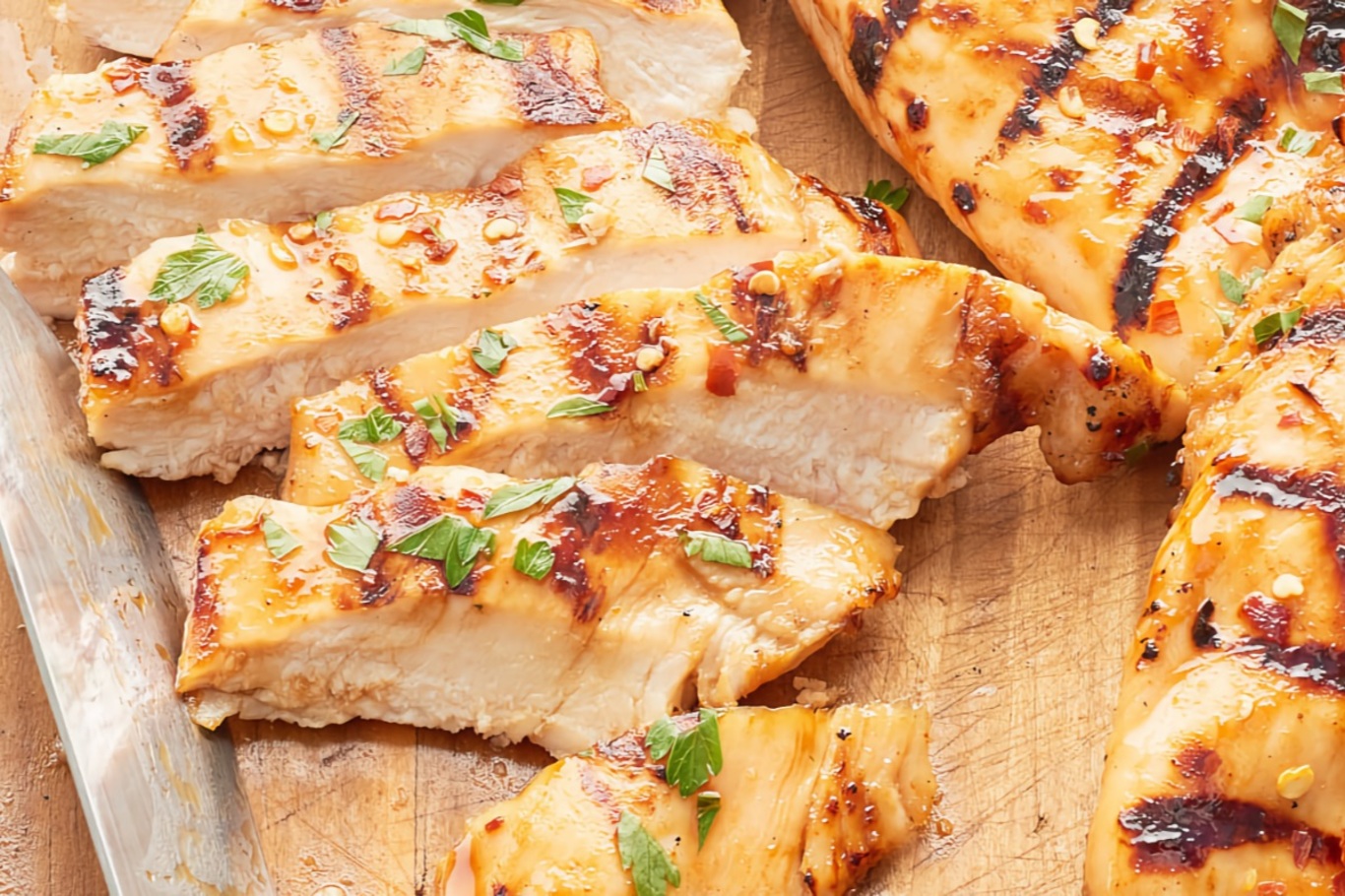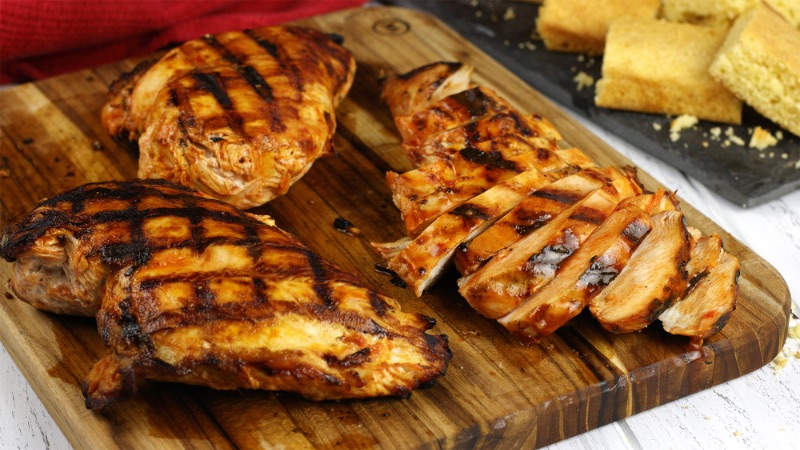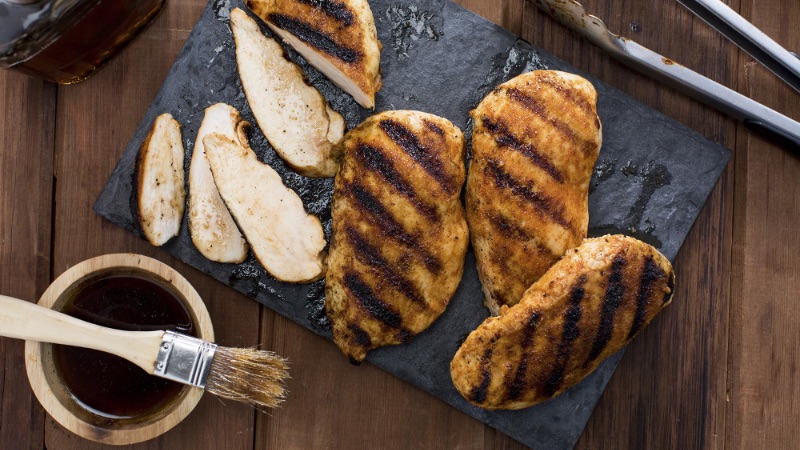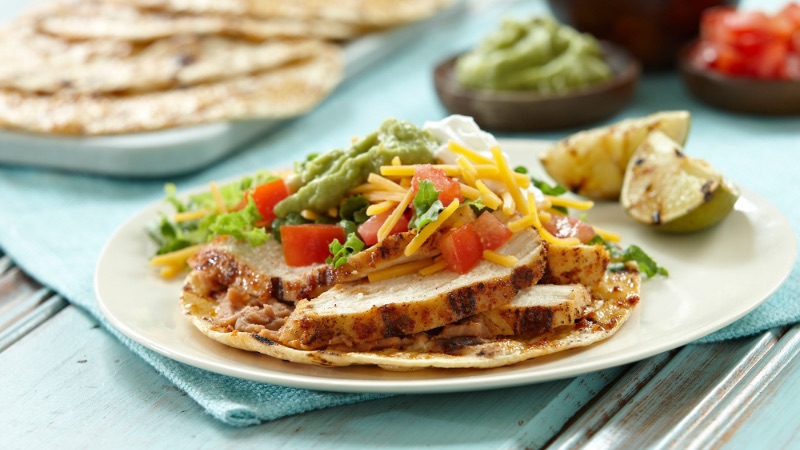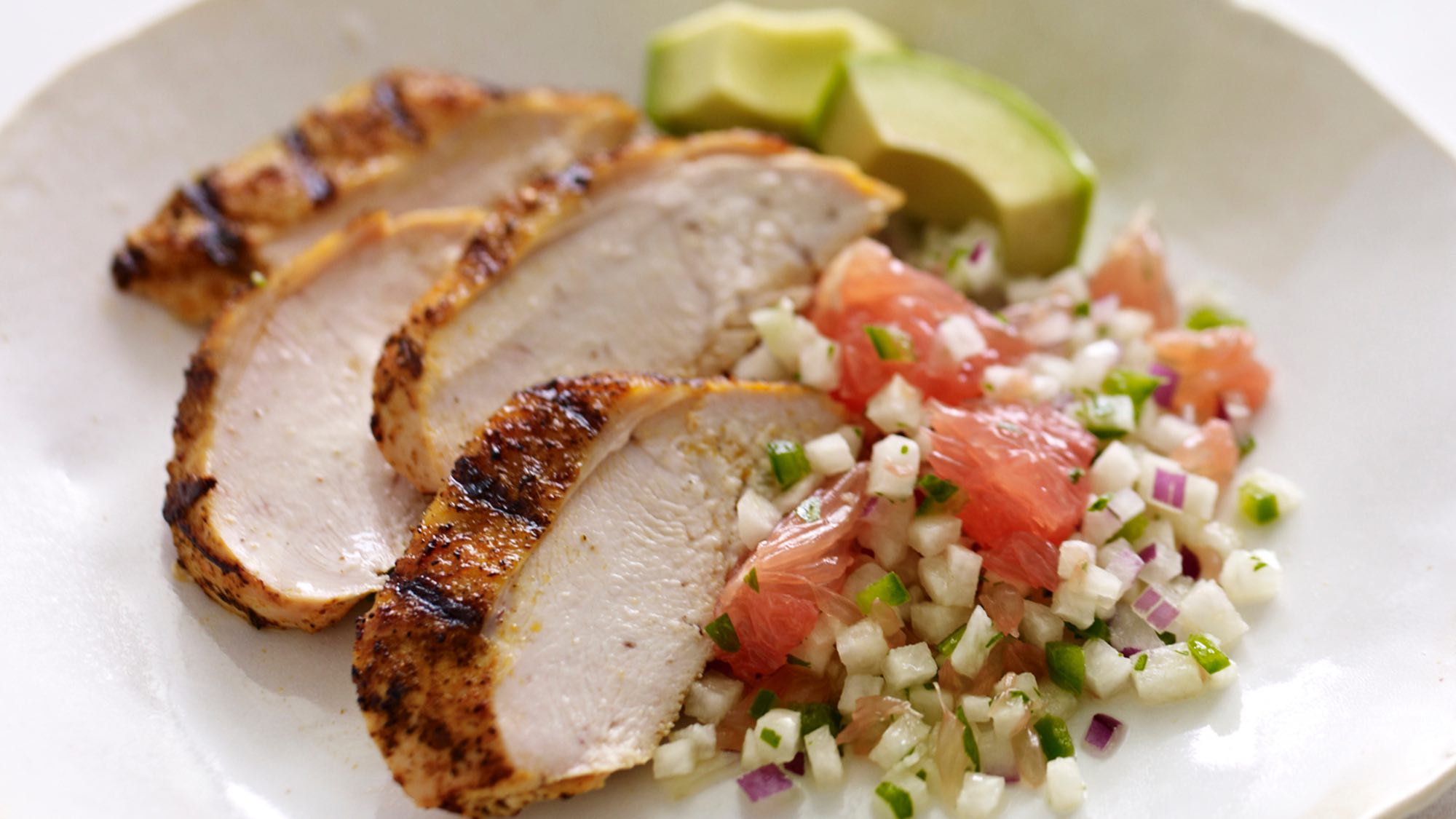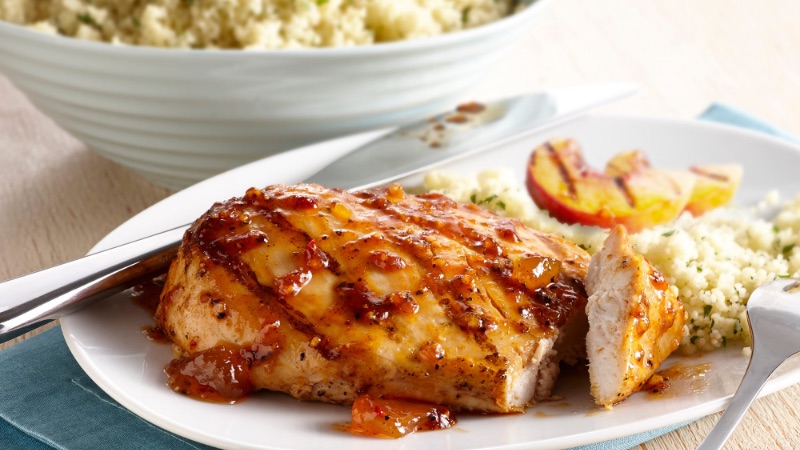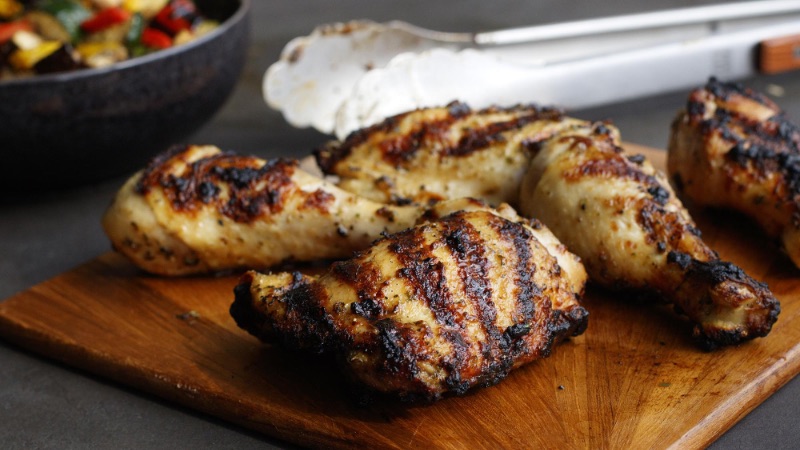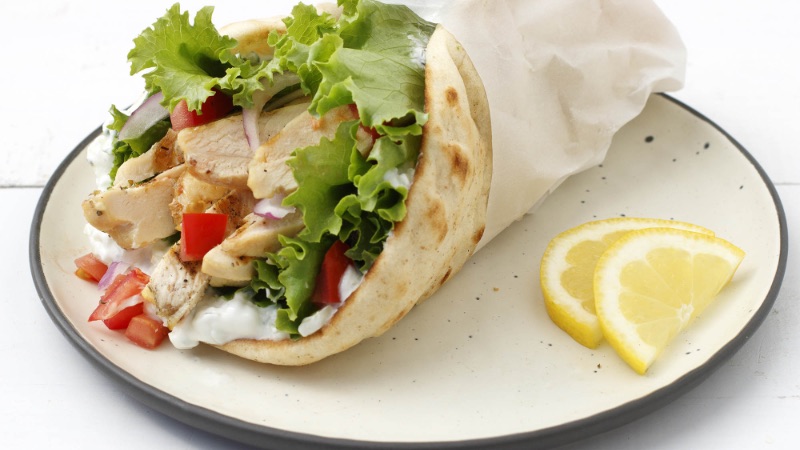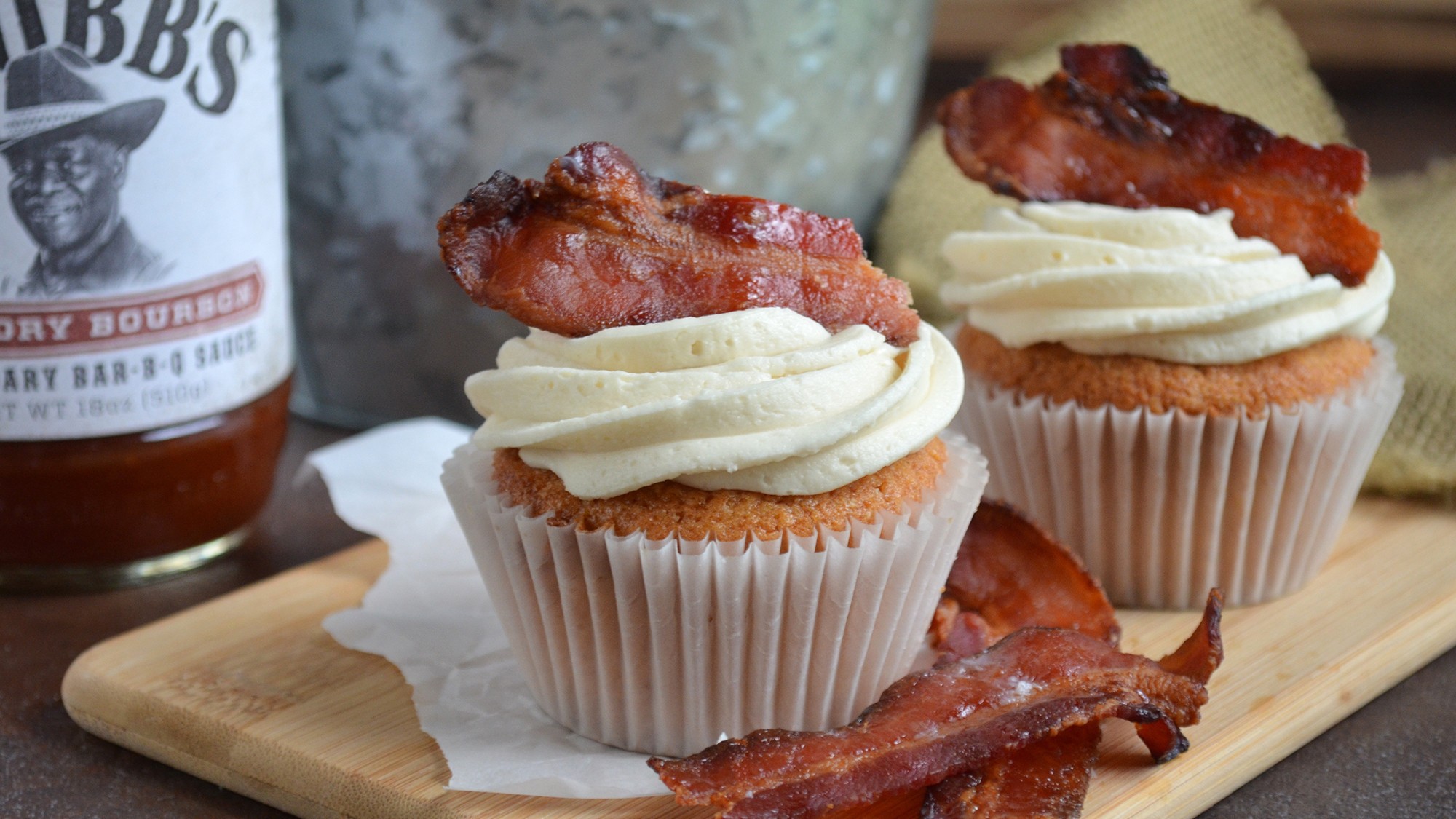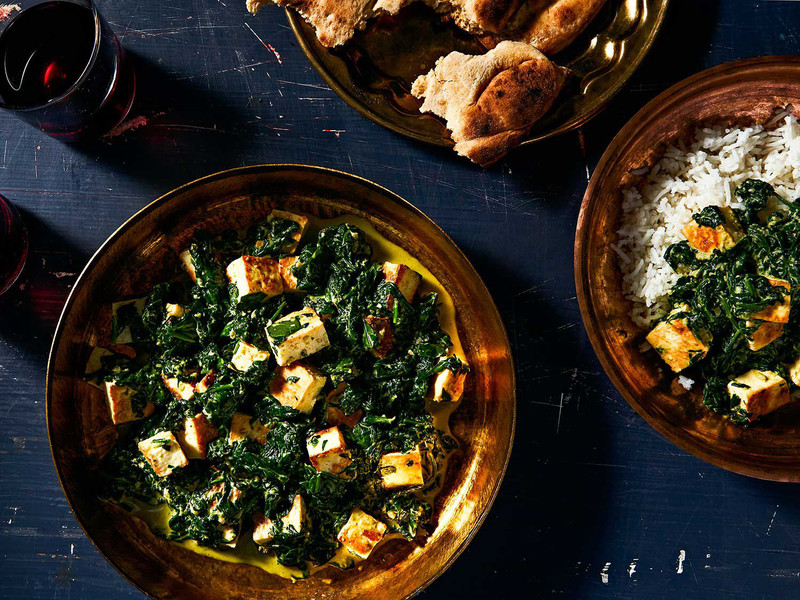There are burgers and hot dogs, but no dish speaks to true grilling prowess quite like perfectly grilled chicken breast. Marked by the grill and turned a most gorgeous caramel-colored hue, the very best grilled chicken breast promises to be juicy and tender -- and as versatile for quick summer meals as a good tomato. Grilled chicken has become so ubiquitous, though, that we often forget what a real stunner it can be among dry and less flavorful grilled fare.
The key steps to really juicy grilled chicken are kitchen essentials -- lessons that even the most seasoned griller should revisit each year. Pound the chicken thin for more even cooking, brine or marinade for flavor and color, and grill over direct heat for grill marks, but finish over low heat to keep them juicy.
What to do before you grill
--Pound the chicken into flat, even pieces for easier grilling.
--Make a marinade-brine hybrid that doubles as a glaze.
--Brine the chicken for juicy breasts every time.
What to know at the grill
--The difference between direct and indirect heat, and when to use which.
--The right doneness temperature for grilled chicken breast.
--How to account for carryover cooking.
Make chicken breast flat and even
The uneven shape of boneless, skinless chicken breasts makes them tricky to grill, but by just spending a few minutes pounding the thicker end thinner, you'll both reduce cooking time and end up with evenly cooked meat.
Brine before grilling to prevent dry, rubbery chicken
Brining is simply submerging the chicken in a salt-water solution before grilling. This prevents the chicken from overcooking on the grill and also helps it get great grill marks, as the increased surface moisture and sugars brown quickly. Brining also keeps the interior of the chicken breasts juicy while grilling. It's one of the easiest ways to ensure success, but it does require extra time so plan accordingly.
As little as 30 minutes of brining helps the chicken breast, but you can brine chicken breasts in a mild brine for eight to 12 hours.
The magic of a marinade-brine hybrid
This recipe calls for a quick mixture of honey, vinegar and spices to be added to the brine and used as a glaze. This sort of hybrid marinade-brine adds flavor and color to the breast before grilling, and glazing them before serving makes them finger-licking good.
Get familiar with direct and indirect grilling
Direct heat will get you great grill marks over a fast flame, while indirect will bring your meat to temperature. Direct heat means to cook the food directly over the heat source (whether charcoal, gas, or wood), while indirect cooking refers to cooking adjacent to the heat source. A combination of direct heat for prominent grill marks followed by indirect heat to cook the chicken to the correct temperature without drying it out makes for pretty, juicy chicken breasts.
Have your digital thermometer handy
A digital probe thermometer is one of the best tools you can own for the grill. While you've already done a lot of work to ensure that those chicken breasts are cooked correctly -- by flattening them for even cooking, brining for juiciness, and cooking over direct heat for grill marks -- you still want to be doubly sure the chicken is cooked through.
Insert the probe thermometer into the thickest part of the chicken (the flattened part will plump back up a bit over the heat) and look for a temperature of 165 F. While you can safely remove the chicken at 160 F and allow for some carryover cooking, 165 F is the safest temperature to ensure the chicken is cooked completely.
How to get really great grill marks
Make sure your grill grates are clean and debris-free before you put the chicken on the grill. Pat the chicken breast dry to remove excess surface moisture that causes steaming instead of searing. Cook the chicken over direct heat for three minutes to get gorgeous grill marks; then move to indirect heat, cover, and grill to 165 F before removing from the grill.
Grilled Chicken Breast
Serves 4
For the marinade and glaze:
3/4 cup honey
1/4 cup apple cider vinegar
2 tablespoons Dijon mustard
1 teaspoon red pepper flakes
For the brine:
2 tablespoons kosher salt
4 cups water
4 boneless, skinless chicken breasts (about 2 pounds total)
Make the marinade. Whisk all the ingredients together in a small bowl; set aside.
Make the brine. Place the salt and water in a large (gallon-sized) zip-top bag, and stir until the salt is dissolved. Add half of the marinade, and stir to combine. Reserve the remaining marinade in the bowl for glazing the finished chicken.
Pound the chicken thin. Working with 1 chicken breast at a time, place a breast inside a gallon zip-top bag. Use the flat side of a meat mallet or rolling pin and pound until 1/4-inch thick. Set the flattened chicken breast aside and repeat with remaining breasts.
Marinate the chicken. Place the chicken in the zip-top bag with the marinade and brine, and massage to coat. Seal the bag, and place on a baking sheet. Arrange the chicken so it is sitting in a single layer in the bag. Refrigerate at least 30 minutes or overnight.
Prepare the grill. Prepare an outdoor grill for both high direct and indirect heat. Scrape any debris from the grill grates and oil well.
Pat the chicken dry. Remove the chicken breasts from marinade, and pat dry with paper towels.
Grill over direct heat. Place the chicken breast over direct heat, with the grill's grates running at an angle against the width of the breast. For the best grill marks, don't move the chicken once it has been set down and avoid pressing, prodding or poking for 3 minutes. Flip the chicken -- when ready, the breasts will lift up easily for flipping. Cook the second side until grill marks appear, about 3 minutes more.
Grill over indirect heat. Move the chicken to indirect heat (or reduce the heat to medium on a gas grill). Brush with the reserved glaze. Check the chicken for doneness with a digital probe thermometer. The chicken is ready when it registers 165 F. Brush with more reserved glaze, if desired.
Rest the chicken. Transfer the chicken to a clean cutting board or serving platter and let rest 5 minutes. Slice if desired.
Recipe notes: Leftovers can be stored in an airtight container in the refrigerator for up to four days.
This article is written by Meghan Splawn from The Kitchn and was legally licensed via the Tribune Content Agency through the NewsCred publisher network. Please direct all licensing questions to legal@newscred.com.


